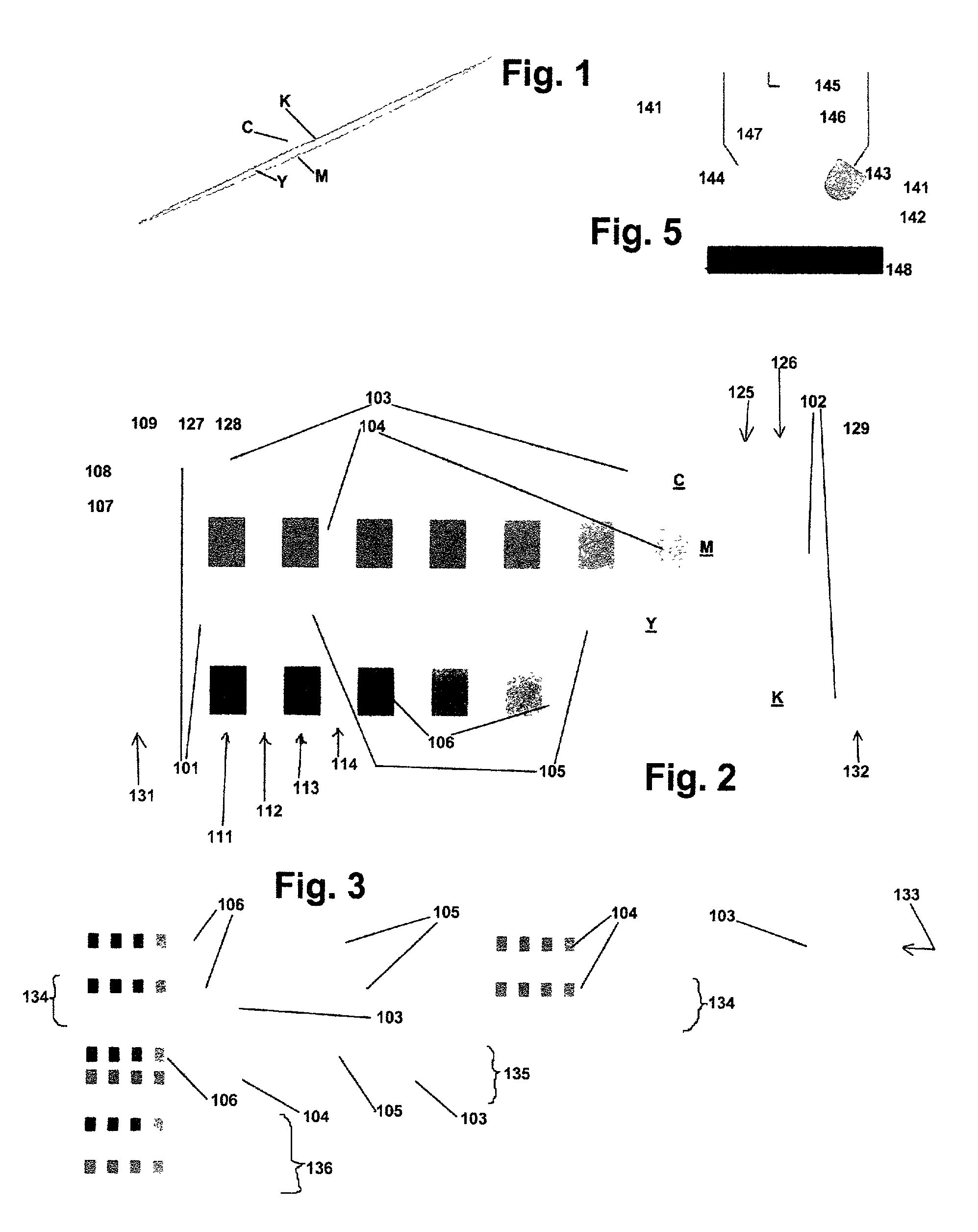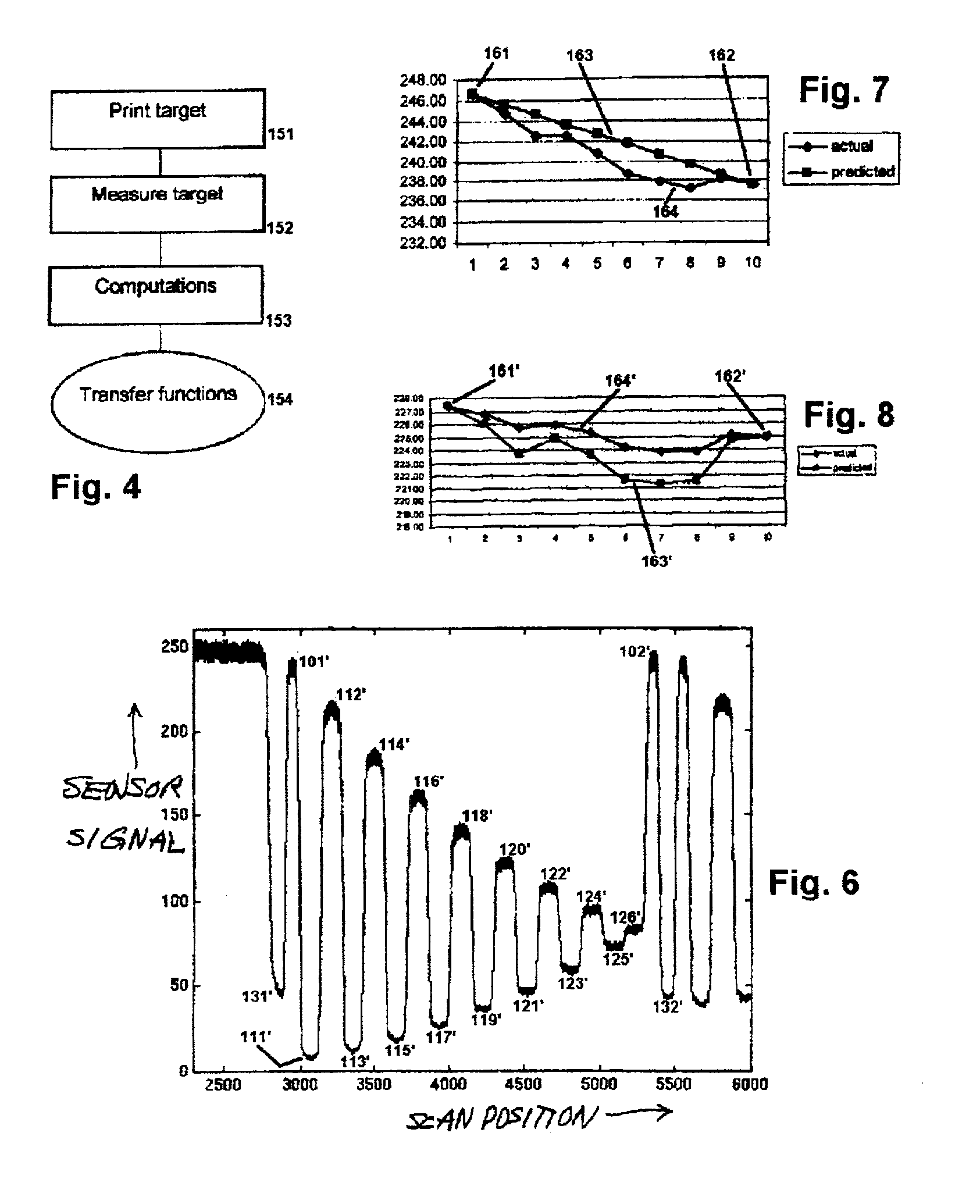Compensating for drift and sensor proximity in a scanning sensor, in color calibrating incremental printers
- Summary
- Abstract
- Description
- Claims
- Application Information
AI Technical Summary
Benefits of technology
Problems solved by technology
Method used
Image
Examples
Embodiment Construction
1. Stability vs. Linearity vs. Cost
[0118]As noted in the earlier “Background” section of this document, the problem left unsolved for relatively inexpensive printing systems was how to more economically provide signal linearity and discrimination that are adequate for a good color calibration. It is also observed there that an inexpensive ADC could be sufficient if a lower standard of linearity could be tolerated, and in turn that such a system would accomplish the goal if only the overall light level could be made half as high.
[0119]Halving the illumination level, however, seemed to fly in the face of a requirement for full spectral illumination, with ample warmup time. Illumination over the full spectrum cannot be achieved by running just one LED.
[0120]On the other hand, operating only one source at a time—i. e. alternating two LEDs, with adequate warmup in each ramp-measurement cycle—would take a prohibitively long time for all the lamp-warmup intervals. The invention, however, a...
PUM
 Login to View More
Login to View More Abstract
Description
Claims
Application Information
 Login to View More
Login to View More - R&D
- Intellectual Property
- Life Sciences
- Materials
- Tech Scout
- Unparalleled Data Quality
- Higher Quality Content
- 60% Fewer Hallucinations
Browse by: Latest US Patents, China's latest patents, Technical Efficacy Thesaurus, Application Domain, Technology Topic, Popular Technical Reports.
© 2025 PatSnap. All rights reserved.Legal|Privacy policy|Modern Slavery Act Transparency Statement|Sitemap|About US| Contact US: help@patsnap.com



